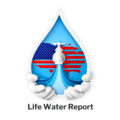As environmental concerns are on the rise in our modern world. It’s essential to be aware of the potential risks of various toxic substances that we encounter in our daily lives.
One of these toxic substance is atrazine, an herbicide commonly used in agriculture to control weeds. This has raised concerns related to the potential effects of the widely used herbicide atrazine on both wildlife and human health. It has been linked to demasculinization and forced feminization in frogs, leading to questions about its impact on the human population.

Atrazine Herbicide: An Endocrine Disruptor
Atrazine is recognized as one of the most commonly used pesticides globally and contaminates various water sources.
It belongs to a group of man-made systemic herbicides known as triazines. First registered for use in 1958, atrazine has become one of the most commonly used herbicides worldwide.
Its widespread presence raises concerns about its potential risks to both animals and humans. Studies revealed that atrazine acts as an endocrine disruptor that interferes with hormonal balance.
The Frog Study: Unveiling the Effects
Research conducted by Professor Tyrone B. Hayes at the University of California, Berkeley, revealed its impact on amphibians.
The study exposed male frogs to atrazine, resulting in demasculinization and feminization.
Shockingly, around 10 percent of male frogs transformed into fully viable females capable of producing eggs.
These findings raised alarm bells and prompted further investigation into atrazine’s potential effects on humans.
Mechanism of Action: Aromatase and Hormonal Disruption
To understand atrazine’s feminizing effects, we need to explore its mechanism.
Atrazine triggers an enzyme called aromatase. This enzyme converts androgens, responsible for male sexual development, into different forms of estrogen.
In frogs exposed to toxic chemical, this enzymatic activity leads to male feminization. While the impact on humans, is not as extreme as in reptiles and amphibians but aromatase induced by atrazine exposure has been associated with increased risks of breast and prostate cancer.
Atrazine and Breast Cancer
Atrazine and breast cancer were investigated in a 1997 study. The research focused on Kentucky women exposed to atrazine-contaminated well water.
The results showed a statistically significant increase in breast cancer risk among those exposed to the medium to high herbicide levels.
Although causality cannot be definitively established due to the study design limitations, it highlights a potential association between atrazine exposure and breast cancer.

Research Consistency: A Global Perspective
Herbicide investigation extends beyond a single study. 22 independent research studies conducted in 12 different countries examined the impact of atrazine exposure on various species.
These studies consistently reported similar findings, including demasculinization, feminization, and reduced fertility due to its exposure.
Atrazine can cause tumors, breast, ovarian, and uterine cancers, leukemia, and lymphoma. In amphibians and humans, it disrupts normal hormone function and causes birth defects, reproductive tumors, and weight loss.
Environmental Concerns and Human Exposure
People can be exposed to herbicide through various routes, including:
- Drinking Water: Those who rely on surface or groundwater sources for drinking water may be exposed to it if their water supply becomes contaminated. It can enter water sources through runoff from fields where the herbicide was applied.
- Occupational Exposure: Workers in factories involved in atrazine production or handling may have a higher risk of exposure. These individuals may contact the herbicide directly during manufacturing, packaging, or other related processes.
- Agricultural Activities: Farmworkers and herbicide applicators may be exposed to herbicide during application. This includes mixing, spraying, and handling herbicide-containing products.
- Soil Contact: Individuals can potentially be exposed to atrazine by touching soil treated with herbicide. This can occur during activities such as gardening, farming, or playing in areas where atrazine has been applied.
- Ingestion: Accidental herbicide ingestion can happen if individuals consume food or water that contains herbicide residues. Atrazine may be present at low levels in certain crops or drinking water sources due to its approved agricultural use.
- Dermal Contact: Skin contact with atrazine formulations or contaminated surfaces can also lead to exposure. This can happen when individuals touch plants or objects treated with atrazine or come into contact with clothing or equipment contaminated with the herbicide.

Known Harms Reported by US Agencies
The ATSDR, a division of the U.S. Department of Health and Human Services, highlighted the potential health risks linked with herbicide exposure.
According to its 2003 toxicological profile, atrazine can affect the reproductive system by altering blood hormone levels, potentially affecting fertility.
Atrazine Herbicide demand is evident from the annual average usage of 72 million pounds between 2013 and 2017.
Under the Safe Drinking Water Act, community water systems are required to monitor for atrazine and maintain sampling levels below the MCL of 3 μg/L.
ALERT – The European Union and many other Countries have banned the use of atrazine due to environmental and health concerns. More Countries would have banned this toxic poison but the Manufacturers of this poison have powerful lobby groups that bribe politicians thru “political contributions”. Most politicians work for Big Industry and not for their Constituents!
Methods to Remove Atrazine:
Choose organic produce: By opting for organic fruits, vegetables, and grains, you can minimize atrazine residues.
- Wash fruits and vegetables: Thoroughly washing produce under running water can remove any surface residues, including herbicides. Consider using a vegetable brush for difficult produce.
- Peel fruits and vegetables: Peeling the outer layer of fruits and vegetables can further reduce the likelihood of ingesting atrazine residues. Note: do keep in mind that certain nutrients may be lost when peeling.
Check the water quality in your area. You can check your water quality through the Life Water Report. You can also visit Life Water Report and enter your zip code.
Find out if your drinking water is contaminated with a FREE WATER REPORT for your area.
“Don’t Compromise on Your Health. Filter Out Atrazine Today!” Atrazine can contaminate drinking water sources, particularly groundwater. Installing a water filter with activated carbon or reverse osmosis can remove or reduce atrazine and other pollutants.
Activated carbon filters:
Activated carbon filters, such as activated carbon granules or activated carbon block filters, are commonly used to remove atrazine and other organic contaminants from water. These filters work by adsorbing atrazine molecules onto carbon surfaces.

The Life Sciences™ Hydrogen Alkaline Bio Energy Water System is a state-of-the-art 5-stage filtration system that ensures clean and safe drinking water by removing impurities and enhancing water quality. With features like pH enhancement, antioxidant infusion, and a Free Bonus Borosilicate Glass Pitcher with multiple uses for making coffee, tea, herb and also fruit infused alkaline beverages. Backed by a lifetime warranty, it offers a comprehensive and reliable solution for high-quality water purification “Manufacturer to You” Discount Pricing at only $297. The difference between this unit is its activated carbon filter that reduces scale buildup in pipelines.
- The additional carbon filter increases the removal of fluoride, lead, arsenic, and other heavy metals
- The Inclusion of the Free Bonus Pitcher allows you to make healthy alkaline beverages. click here
Reverse Osmosis Systems:
Reverse osmosis (RO) systems remove herbicide from water. RO systems use a semipermeable membrane to remove a wide range of contaminants, including atrazine’s. They are often considered one of the most efficient water purification methods.

Life Sciences™ introduces its cutting-edge Reverse Osmosis Alkaline Water Purifying Generator with innovative Tankless Technology. This state-of-the-art system, capable of removing up to 98% of contaminants, includes five specialized filters. The Alkaline Water RO Filter improves hydration and provides 40 health benefits, fortified with calcium, magnesium, and potassium minerals. With a lifetime warranty, this premium-quality system boasts an additional bonus – a Borosilicate Glass Water Pitcher with an Infuser, featuring the powerful “Flower of Life” symbol for enhanced alkaline water.
This superior water purification system is “Manufacturer to You” Discount Pricing priced at only $597. This low price is made possible because we design and manufacture of our own products, eliminating the middle man.
Bonus Features:
This Free Bonus with these Alkaline Water Systems enhances the convenience of alkaline mineral water on the table or in the fridge with its borosilicate glass water pitcher. The pitcher comes with a stainless steel infuser, allowing users to create infused herb water, hot or iced coffee, and other flavorful alkaline beverages. Its versatile design is stove-top ready for hot drinks or cold drinks from the fridge.
Call to action:
Herbicides are an everyday part of our lives, so these toxic chemicals harm both humans and animals. The research evidence presented suggests a potential link between herbicide and increased breast cancer risk, alongside other adverse effects on various species.
We can invest in our future health by taking preventive measures. And invest in a reliable water filtration system that removes atrazine from your tap water. These filtration systems use various methods, such as activated carbon filters, reverse osmosis, or distillation, to eliminate contaminants. This will provide cleaner, safer drinking water.
Check out Water Report and get a TRUTHFUL water report. Look at Life Water Report’s multiple solutions and choose the right one for your Family.
C. P. (2023, June 16). Common Herbicide Could Be Causing Sexual Dysphoria: Robert F. Kennedy Jr. The Epoch Times. https://www.theepochtimes.com/
A. K. D. (n.d.). Atrazine and Human Health. Scientific and Academic Publishing. http://article.sapub.org/10.
